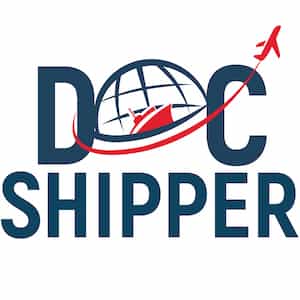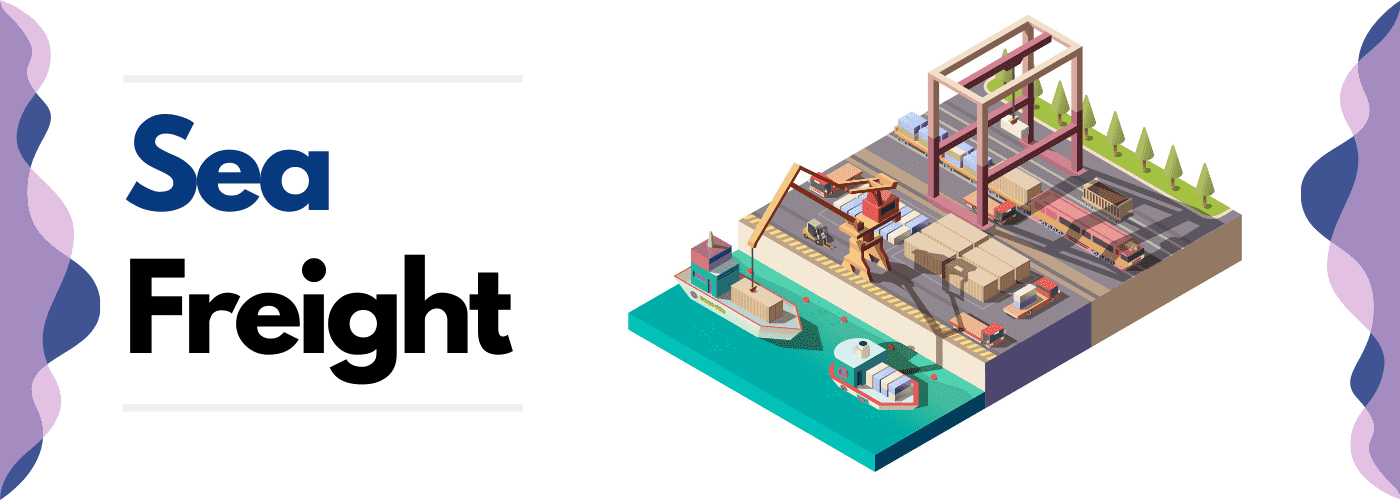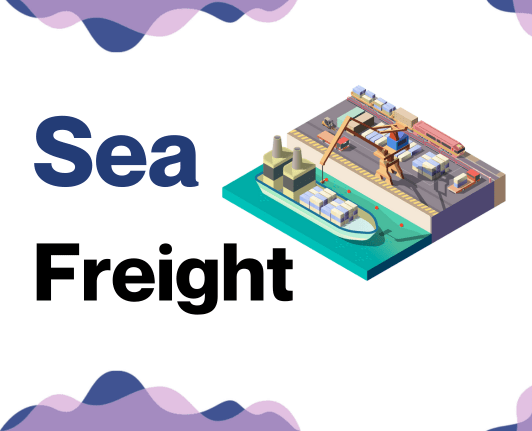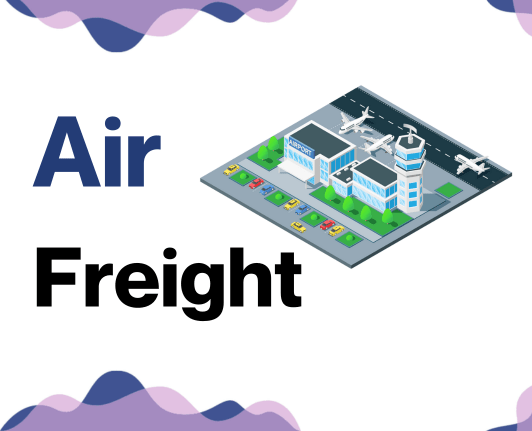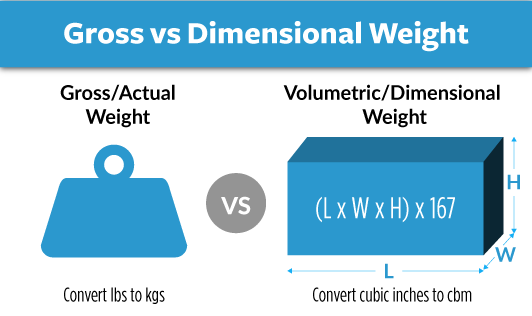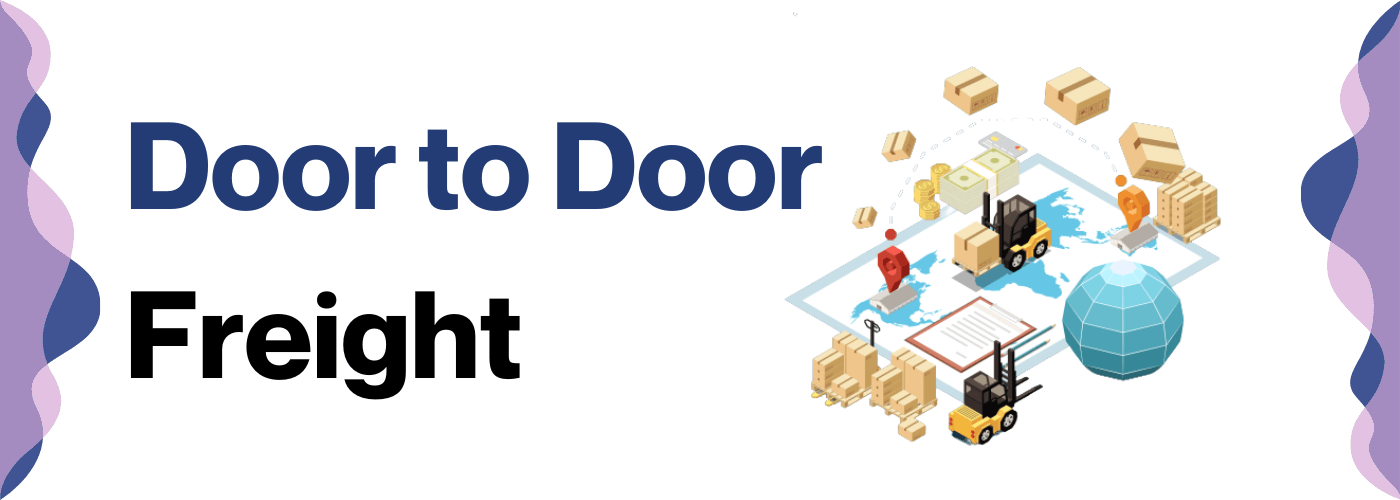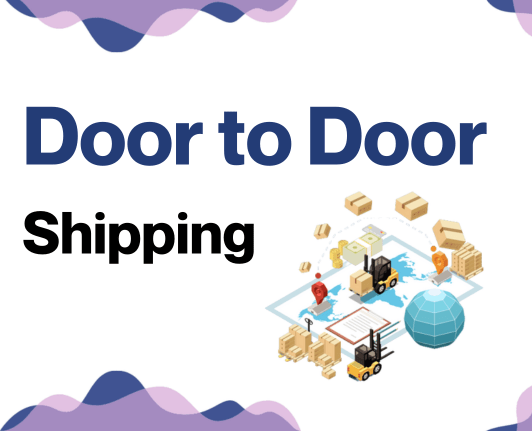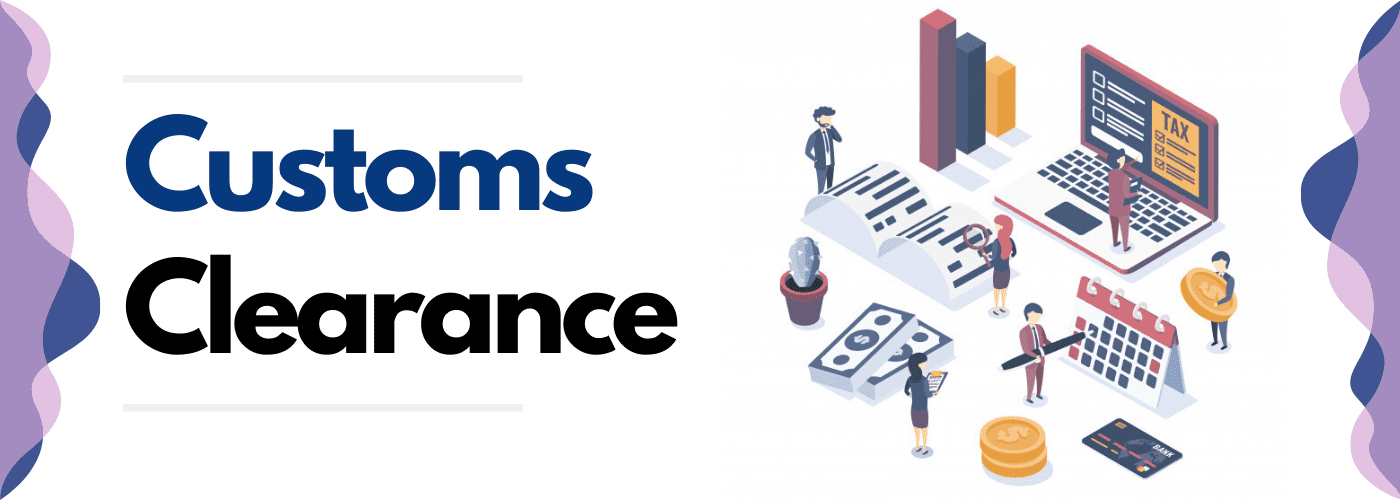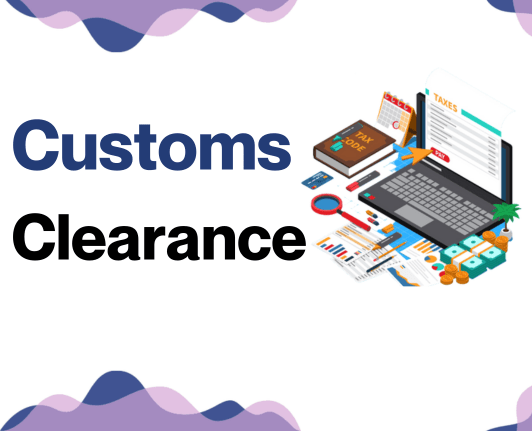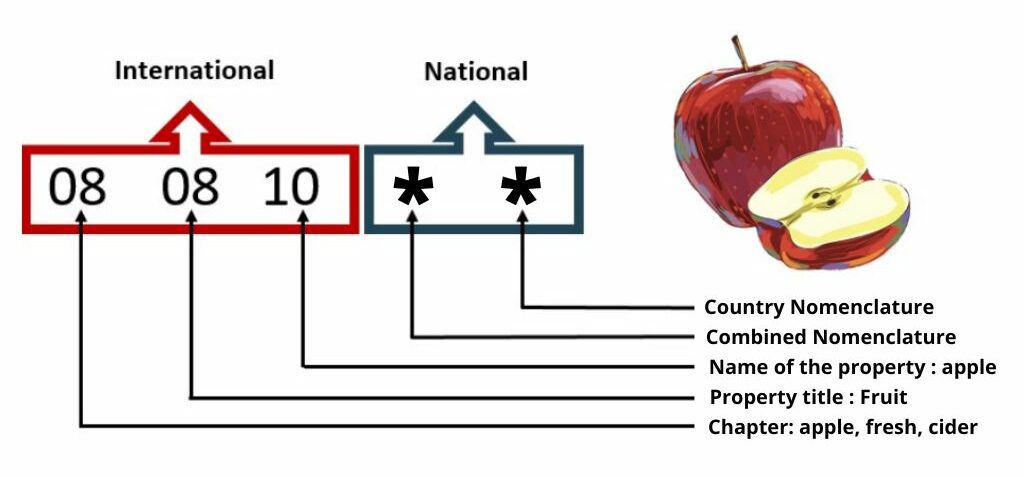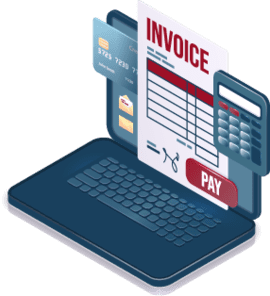Shipping goods from Malaysia to Romania: it's a bit like trying to score a goal without knowing the game rules! It's easy to get tripped up with obstacles such as understanding freight rates, transit times, and customs regulations. That's where this comprehensive guide comes into play, offering a clear roadmap through the complexities of international freight transportation. From exploring air, sea, road, or rail freight options to demystifying the customs clearance process, duties, taxes, and more—this guide aims to equip businesses to make informed decisions. You'll find practical advice specifically tailored to foster success in transcontinental shipping operations. If the process still feels overwhelming, let DocShipper handle it for you! As an experienced international freight forwarder, we turn shipping challenges into triumphs for businesses around the globe.
Table of Contents
Which are the different modes of transportation between Malaysia and Romania?
When shipping goods between the lush rainforests of Malaysia and the charming landscapes of Romania, the choice of transport method becomes pivotal. Picture this: you're on a worldwide scavenger hunt, and your task is to send an item halfway across the globe. The long route, spanning mountains, seas, and multiple borders, makes air freight a faster, albeit more expensive option. But not all the goodies are in a rush - for those, ocean freight is the reliable tortoise to the air freight hare. It's about picking the right runner for your race, tailored to your timeline, budget, and item specifics.
How can DocShipper help?
Planning to ship goods between Malaysia and Romania? DocShipper is your trusted partner. From handling intricate custom procedures to organizing systematic multimodal transport, we cover it all. Wondering about the cost? Get your free estimate within 24 hours! Have more questions? Ring up our experts totally free. Let's get shipping!
DocShipper Tip: Sea freight might be the best solution for you if:
- You're dealing with hefty quantities or oversized goods. Sea transport is your go-to for maximizing space without stretching your budget.
- Time sensitivity isn't a concern for your shipment. Ocean freight is known for its leisurely pace, especially when compared to the speed of air or rail.
- Your supply chain connects key international harbors. This positions you to take full advantage of a wide-reaching network of ocean trade routes.
Sea freight between Malaysia and Romania
As flourishing trade partners, Malaysia and Romania connect through key seaports such as Port Klang and Constanta Harbour, enabling significant cargo exchanges. Sea freight offers an economical, albeit slower solution, particularly suited for high-volume goods. Now, shipping between these countries may seem complicated — missteps are common, and businesses often face hurdles navigating the logistics labyrinth. But don't despair; understanding and adopting best practices can fast-track your shipping success.
This section unravels the complexities of ocean freight between Malaysia and Romania. Imagine it as a guidebook taking you on a journey interpreting dense instructions into simple, 'follow-the-dotted-line' directions. Details such as accurate documentation, tariff codes, and timely customs clearance will help prevent potential pitfalls. Insights offered here echo the lessons learned in the real-world freight forwarding game. No shipping challenge is too formidable — armed with the knowledge laid out within this guide, you'll be charting smoother shipping routes in no time.
Main shipping ports in Malaysia
Port Klang
Location and Volume: Situated on the west coast of Peninsular Malaysia, Port Klang is the country's busiest port, handling over 11.8 million TEU in 2020.
Key Trading Partners and Strategic Importance: Among the crucial global trading partners are Singapore, China, Japan, and Taiwan. This port serves as a primary gateway to the bustling Kuala Lumpur region, amplifying its strategic value.
Context for Businesses: Considering the expansion to East Asian and Southeast Asian markets? Utilizing Port Klang could streamline your logistics, thanks to its strategic location and high shipping volume.
Port of Tanjung Pelepas
Location and Volume: Located at the eastern end of the Straits of Malacca, the Port of Tanjung Pelepas harbors a shipping volume of roughly 8.9 million TEU in 2020.
Key Trading Partners and Strategic Importance: Key trading partners consist of Singapore, Hong Kong and China. Its close proximity to Singapore's port and the Equator significantly boosts its strategic placement.
Context for Businesses: Your strategy to maximize efficiency in shipping to Southeast Asia and Far East Asian markets could highly benefit from integrating the Port of Tanjung Pelepas into your freight plans.
Port of Penang
Location and Volume: Positioned in the northern part of Peninsular Malaysia, the Port of Penang managed approximately 1.52 million TEU in 2020.
Key Trading Partners and Strategic Importance: Critical trading partners include India, China, and Singapore. The port's positioning strategically serves northern Malaysia and Southern Thailand.
Context for Businesses: If your plans involve Southern Asian markets such as India, consider leveraging the potential of the Port of Penang due to its connectivity and strategic location.
Johor Port
Location and Volume: Nestled in the southern tip of the Malay Peninsula, Johor Port's shipping volume was roughly 0.9 million TEU in 2019.
Key Trading Partners and Strategic Importance: Chief trading partners include Thailand, Vietnam, and Indonesia. Johor's vast range of specialist ports makes it strategically essential, especially for bulk and liquid cargoes.
Context for Businesses: Johor Port is potentially unequaled for niche goods or specialty product shipping to or from Southeast Asia, given its unique service capabilities and strategic location.
Bintulu Port
Location and Volume: Bintulu Port, found in East Malaysia, has focused predominantly on bulk cargo rather than TEU volumes. It is the chief exit and entrypoint for Sarawak and Brunei's energy industries.
Key Trading Partners and Strategic Importance: The port does an extensive amount of trade with Australia, India, and Japan, among others. It has strategic relevance primarily in the energy sector, as one of the world's largest LNG terminals.
Context for Businesses: If your enterprise is entrenched in the energy sector, Bintulu Port's strategic significance in this field could make it a vital hub in your shipping strategy.
Port of Kuantan
Location and Volume: Positioned on the east coast of Peninsular Malaysia, the Port of Kuantan specializes in handling bulk cargo rather than TEU.
Key Trading Partners and Strategic Importance: Key trading partners include India, Australia, and China. Its strategic importance is linked to its proximity to the South China Sea's major shipping routes.
Context for Businesses: Given its strategic location, the Port of Kuantan can be a good fit for your company if your operations revolve around bulk shipping, particularly along the South China Sea.
Main shipping ports in Romania
Port of Constanta
Location and Volume: Situated in southeastern Romania, the Port of Constanta is the largest port in the Black Sea and a major hub, with an impressive annual shipping volume exceeding 66 million tons.
Key Trading Partners and Strategic Importance: With connections to over 50 countries, key trade partners include China, Turkey, and Russia. Its strategic importance lies in its deep-water facilities, enabling the handling of large vessels, and direct access to the Danube river, providing a gateway to central Asia and Europe.
Context for Businesses: If you are planning on reaching markets in Russia, Turkey, or even Central Asian countries, the Port of Constanta could play a key role in your shipping strategy, offering excellent connections and facilities.
Port of Midia
Location and Volume: Just a few kilometers north of Constanta, the Port of Midia mainly serves oil and gas vessels, handling more than 9 million tons of cargo annually.
Key Trading Partners and Strategic Importance: Important trading relations span across Europe, Asia and the Middle East, with a particular focus on petroleum and petroleum products.
Context for Businesses: The Port of Midia could be an essential part of your strategy if you're involved in the petroleum industry. Its specialized facilities and strategic location present a conducive environment for shipping petroleum products.
Port of Mangalia
Location and Volume: Further south from Constanta, the Port of Mangalia is the southernmost maritime port of Romania, handling approximately 1.2 million tons of cargo each year.
Key Trading Partners and Strategic Importance: Mangalia engages in trade predominantly with European partners. It is specially equipped for handling bulk cargoes and general cargoes such as coils, timber and heavy lifts.
Context for Businesses: If your business involves shipping bulk or general cargo, Mangalia can be a strong choice given its specialized capabilities, providing an efficient route into Southern Romania and beyond.
Port of Giurgiu
Location and Volume: Positioned on the Danube River, the Port of Giurgiu is a key inland terminal. With an annual cargo volume of more than 300,000 tons, it facilitates essential river transport.
Key Trading Partners and Strategic Importance: Trading largely with Germany, Serbia, and Hungary, this port acts as a key route for goods moving through the southern corridor of the Danube.
Context for Businesses: The Port of Giurgiu could be advantageous if your strategy involves accessing markets along the Danube. Its facilities make it well-suited to handle containers, bulk, and heavy cargoes.
Port of Calafat
Location and Volume: Located along the Danube River, the Port of Calafat handles approximately 500,000 tons of freight each year.
Key Trading Partners and Strategic Importance: Its main trading partners are Hungary, Bulgaria, and Serbia, handling primarily bulk cargoes of coal, fertilizers, grain, and scrap metal.
Context for Businesses: If you're moving goods in bulk predominantly to Southeastern European markets, the port of Calafat is an excellent logistics point, thanks to its versatility and convenient location on the Danube.
Port of Galati
Location and Volume: Stationed in Eastern Romania, the Port of Galati is another important port on the Danube river, dealing with an annual freight volume of around 5 million tons.
Key Trading Partners and Strategic Importance: Galati has key trade links with Germany, Austria, Hungary, and Serbia. It is noteworthy for its extensive handling of dry and bulk commodities, from metals to woods and grains.
Context for Businesses: If your primary markets are in Eastern Europe or the commodities trade, the Port of Galati can efficiently facilitate your shipping needs with its specialized handling capabilities and strategic location.
Should I choose FCL or LCL when shipping between Malaysia and Romania?
Unsure if Full Container Load (FCL) or Less than Container Load (LCL), otherwise known as consolidation, is right for your cargo from Malaysia to Romania? Choosing between these sea freight options isn't a quick toss of a coin, it's a crucial strategic decision. Your choice influences the cost, delivery time, and overall success of your shipping process. Dive into this guide to understand the differences and make an informed decision tailored to your specific needs.
LCL: Less than Container Load
Definition: LCL or Less than Container Load shipping refers to a method of shipping goods wherein your cargo doesn't fill up a whole container and instead shares space with other shipments.
When to Use: LCL is ideal for shipments between Malaysia and Romania when the cargo volume is less than 13 to 15 cubic meters (CBM). Its flexibility and cost-effectiveness are particularly advantageous to businesses with smaller shipping volumes.
Example: Imagine a company in Kuala Lumpur that produces artisan wooden furniture and receives an order of just ten individual pieces from Romania. As this does not fill a full container load, the company opts for an LCL shipment that allows the transport of their goods alongside other businesses', effectively sharing costs while ensuring swift delivery.
Cost Implications: With LCL freight, you only pay for the container space you're using, making it a cost-effective option if your business doesn’t need a full container. Although the cost per CBM can be higher with LCL as compared to Full Container Load (FCL), the overall cost can prove lower for smaller volumes due to shared expenses.
FCL: Full Container Load
Definition: FCL, or Full Container Load, in shipping refers to a type of ocean freight where a whole container is used exclusively by one shipper for their goods.
When to Use: FCL shipping is the go-to option when your cargo volume measures more than 13/14/15 CBM. It's cost-efficient for high-volume shipments and provides additional safety, as the FCL container remains sealed from the origin to the destination, reducing the risk of damage or loss.
Example: Imagine your Malaysian manufacturer has produced 30 CBM worth of electronic parts for your Romanian store. Here, you could opt for an FCL shipping quote for either a 20'ft or 40'ft container. Since the whole container is yours, you don't have to worry about sharing space or your goods being mishandled.
Cost Implications: While FCL shipping might come with a higher upfront cost compared to LCL (Less than Container Load), the cost per unit is lower when the volume is high. Also, the exclusivity of space reduces additional handling fees, making FCL a more budget-friendly and secure option over LCL for larger shipments.
Unlock hassle-free shipping
Cargo shipping can feel stressful, but it doesn't need to be. DocShipper, your reliable freight forwarder, offers simplified solutions for your business. Our ocean freight experts consider factors like shipment size, budget, time constraints, and distance to help you decide between consolidation or full container shipping. We offer assistance every step of the way for a seamless experience from Malaysia to Romania. Ready to make cargo shipping easy? Reach out to us for a free estimation today.
How long does sea freight take between Malaysia and Romania?
Sea freight shipping time from Malaysia to Romania can approximately vary between 20 to 30 days. The actual transit times can differ based on factors like the specific ports that are being used, the weight of your cargo, and the nature of the goods you're shipping. While we're providing an estimated average time, we highly recommend you to consult a professional freight forwarder, such as DocShipper, for a tailored quote that suits your specific shipping requirements.
Here's a quick look at the estimated shipping times from the four main freight ports in both countries:
| Malaysian Ports | Romanian Ports | Average Transit Time (Days) |
| Port of Klang | Port of Constanta | 26 |
| Port of Tanjung Pelepas | Port of Constanta | 32 |
| Port of Penang | Port of Constanta | 29 |
| Port of Bintulu | Port of Constanta | 24 |
*Please note, Malaysia has more than four ports but these are the main ones used for shipping to Romania. Romania, on the other hand, primarily uses the Port of Constanta for receiving sea freight due to its strategic location and extensive capacity.
How much does it cost to ship a container between Malaysia and Romania?
Understanding the cost to ship a container from Malaysia to Romania isn't as straight-forward as you might think. Ranging widely, ocean freight rates per CBM can vary significantly due to several factors. These variables include your Points of Loading and Destination, the carrier chosen, the type of goods being transported, and the ever-changing monthly market conditions. This complexity makes providing an exact, one-size-fits-all shipping cost impractical. But don't worry. Our team of dedicated shipping specialists is on hand to work out the specifics with you, offering the best rates tailored to your unique shipping needs. Remember, we quote on a case-by-case basis, ensuring you get the fairest deal possible.
Special transportation services
Out of Gauge (OOG) Container
Definition: Oversized cargo that doesn't conform to standard container dimensions is shipped using Out of Gauge (OOG) containers. The unique setup with flat rack or open top facilities ensures practical loading/unloading of cargo.
Suitable for: This is optimal for transporting heavy equipment, machinery, large scale structures, and other items with irregular dimensions.
Examples: It's preferred for shipping wind blades, heavyweight generators, excavators, and other substantial machinery.
Why it might be the best choice for you: If you possess items that can't be comfortably accommodated by standard containers, OOG container service, tailor-made for out of gauge cargo, can be the most effective solution.
Break Bulk
Definition: Includes individual units of cargo, or 'break bulk', which are loaded onto the ship one at a time. It's typically used for goods that are difficult to containerize and need to be loaded individually.
Suitable for: This freight shipping option is ideal for oversized equipment, heavy machinery, or extremely large manufactured goods.
Examples: Examples of break bulk goods include bulldozers, boilers, or heavy vehicles that can't be dismantled into smaller parts.
Why it might be the best choice for you: If your shipment isn't easily containerized and requires special handling, going the break bulk route may be your best bet.
Dry Bulk
Definition: This entails the shipment of dry bulk commodities such as grains, coals, metal ores in large quantities and is usually poured directly into the cargo space of a vessel.
Suitable for: Industrial raw material such as cement, iron ore, coal, and grains which are loose cargo load.
Examples: Common dry bulk shipments are coal into power generation plants, or grain to feed manufacturers.
Why it might be the best choice for you: If you have vast quantities of shippable, un-packaged goods that need a cost-effective shipping solution, the Dry Bulk method could be apt.
Roll-on/Roll-off (Ro-Ro)
Definition: Ro-Ro vessels are designed to carry wheeled cargo like automobiles, trailers, which can be driven on and off the ship via built-in ramps.
Suitable for: Primarily used for shipping vehicles, trailers and machinery that can roll onto and off a vessel.
Examples: Auto manufacturers often use Ro-Ro vessels to transport cars, trucks and other wheeled equipment globally.
Why it might be the best choice for you: If you're in the automotive or heavy equipment industry where mobility of your cargo is a key factor, then Roll-on/Roll-off shipping would be the ideal option.
Reefer Containers
Definition: These are refrigerated units ideal for transporting perishable goods at controlled temperatures.
Suitable for: Goods such as fresh produce, seafood, pharmaceuticals or any other product that needs a constant temperature.
Examples: Winemakers might use reefer containers to ship their wine without the risk of it spoiling, while pharmaceutical manufacturers can ensure their goods stay within the necessary cold chain requirements.
Why it might be the best choice for you: If you're involved in the food, pharmaceutical or any temperature-sensitive industry, consider using Reefer Containers.
Understanding your shipping needs is vital to successfully navigate international logistics. DocShipper is here to help make your Malaysia to Romania shipping effortless and efficient. Please feel free to contact us for a free shipping quote in less than 24 hours.
DocShipper Tip: Air freight might be the best solution for you if:
- You're pressed for time or facing a non-negotiable deadline. Air freight delivers unparalleled speed when it comes to transit times.
- Your shipment is modest in size, falling under 2 CBM. Air freight is particularly well-suited for these smaller consignments.
- Your supply chain includes destinations that are off the beaten maritime or rail paths. Air freight gives you access to a comprehensive global airport network.
Air freight between Malaysia and Romania
Air freight from Malaysia to Romania combines speed with dependability, a lifesaver for high-priority, small-volume, high-value items—think electronics or delicate machinery. You can't beat the speed; in less than a week, your cargo jet sets from Kuala Lumpur to Bucharest. With fewer hands touching your cargo, there's less risk of damage, making the higher costs worth it.
However, there's a tricky side to air freight. Many shippers miscalculate costs, like using wrong weight formulas. Imagine you're baking; miscalculate ingredients and your cake flops. Air freight's similar, wrong measurements, and your shipping budget balloons. Unfortunately, unawareness of best practices also cost shippers, like a hiker without a map straying from the trail. In the following part, we'll unpack these complexities in ways you can avoid. Avoiding the pitfalls makes air freight from Malaysia to Romania a game-changer for your business.
Air Cargo vs Express Air Freight: How should I ship?
Selecting the ideal approach for shipping your goods from Malaysia to Romania might seem daunting, but fret not! Think of air cargo as buying a seat for your goods on a regular flight and express air freight as chartering them their own private jet. A comfortable seat for slower travel, or a high-speed chase - the choice depends on your specific business needs. Let's decode when and how to use each method effectively.
Should I choose Air Cargo between Malaysia and Romania?
Choosing air cargo for shipping between Malaysia and Romania comes with certain advantages. Airlines like Malaysia Airlines and Tarom are prominent players offering efficient and reliable services. Ideal for goods below 150 kg, air cargo shines in cost-effectiveness. Although transit times might be longer due to a fixed schedule, the quick handling and minimized risk of damage or theft add to its appeal. Depending on your budget and the nature of your goods, air freight could be an attractive option for your transport needs. Keep in mind, however, that opting for this method may require adjusting your timeline to align with airline schedules.
Should I choose Express Air Freight between Malaysia and Romania?
Opting for express air freight, a specialized shipping service using cargo-only planes, could be an ideal solution for your Malaysia-Romania shipments if they are below 1 CBM or 100/150 kg (220/330 lbs). Not only does this ensure your goods reach faster, but it also offers comprehensive tracking and customs clearance. Prominent couriers like FedEx, UPS, and DHL excel at these services, highly benefiting businesses with time-critical or low-volume shipments. Decide based on your specific needs, weighing the trade-off between speed and cost.
Main international airports in Malaysia
Kuala Lumpur International Airport
Cargo Volume: Kuala Lumpur International Airport handled over 726,230 metric tons of cargo in 2020.
Key Trading Partners: Major trading partners include China, Singapore, Japan, and the USA.
Strategic Importance: As Malaysia's main international airport, it offers direct flights to six continents and over 100 destinations worldwide making it a major global hub.
Notable Features: KLIA is equipped with one of the most modern cargo facilities, the Advanced Cargo Centre, capable of handling 1.2 million tons of cargo annually.
For Your Business: If you're shipping diverse goods globally, KLIA, with its wide coverage and advanced facilities, should be on your shipping strategy.
Penang International Airport
Cargo Volume: With over 153,703 metric tons of cargo handled in 2019, Penang International is Malaysia's second busiest cargo airport.
Key Trading Partners: Main trading partners include China, the USA, and Singapore, especially in the tech and electronics sectors.
Strategic Importance: Penang International is an important gateway to northern Malaysia and handles a significant proportion of the country's tech and electronic goods.
Notable Features: It's the hub for several courier companies, with dedicated cargo buildings and a Free Commercial Zone for cargo and logistics.
For Your Business: If your company deals in electronics, considering Penang International in your shipping strategy could offer competitive advantages due to its tech-specific facilities.
Sultan Abdul Aziz Shah Airport
Cargo Volume: Handles an approximate 500,000 metric tons of cargo annually.
Key Trading Partners: Principally serves the ASEAN region, with frequent connections to Singapore, Thailand, and Indonesia.
Strategic Importance: Located in Subang, Selangor, it serves as a vital secondary hub to KLIA and is used for high-value, time-sensitive goods.
Notable Features: The airport is home to several fixed-base operators offering private charter flights and logistics services.
For Your Business: Consider this airport if your business deals in high-value goods or requires express logistics services due to its focused facilities and connections.
Johor Bahru International Airport
Cargo Volume: The airport handles around 2,762 metric tons of cargo annually, though it has capabilities for substantial expansion.
Key Trading Partners: Key partners include Singapore, due to proximity, and Middle East destinations.
Strategic Importance: The vast expansion opportunities make it an increasingly attractive hub for international shipping.
Notable Features: Johor Bahru International Airport houses a Free Zone Area, which simplifies customs procedures and reduces transaction times, making it favorable for businesses.
For Your Business: As the airport is expanding and improving its facilities, businesses looking to capitalize on emerging markets may want to add it to their strategy.
Labuan Airport
Cargo Volume: Though it handles less cargo volume than other Malaysian airports, it makes up for it with efficient handling processes.
Key Trading Partners: Geographically close to the BIMP-EAGA region, hence, it partners mainly with Brunei, Indonesia, and the Philippines.
Strategic Importance: It serves the Labuan Federal Territory and is a significant airport for businesses with trading interests in Borneo and the surrounding region.
Notable Features: The airport is part of Labuan's duty-free zone, which can benefit businesses with specific shipping requirements.
For Your Business: If your business is involved with trade in Borneo or nearby regions, including Labuan Airport in your strategy can help leverage the area's free trade benefits.
Main international airports in Romania
Bucharest Henri Coandă International Airport
Cargo Volume: In 2019, this airport reported handling over 39,000 tons of cargo, marking a rise from previous years.
Key Trading Partners: Primarily handles air cargo between Romania and Western Europe, especially Germany, France, and the UK. It also has significant cargo flows with the Middle East and Asia.
Strategic Importance: As the largest airport in Romania, it serves as a major hub for air cargo in the country. Its location in the capital city of Bucharest makes it highly accessible for businesses across the country.
Notable Features: The airport houses dedicated freight facilities with state-of-the-art handling equipment and encompasses a large cargo terminal for efficient logistics.
For Your Business: If your business is especially focused on trading with Western Europe or Asia, leveraging this airport's connectivity could streamline your logistics.
Timișoara Traian Vuia International Airport
Cargo Volume: Handles approximately 8,500 tons of freight per year, and it is continually developing its cargo infrastructure to accommodate growing demand.
Key Trading Partners: The airport primarily serves cargo relations with Western Europe, particularly Germany, Italy, and Spain.
Strategic Importance: Located in the western region of Romania, near the borders of Hungary and Serbia, Timișoara Airport is significant for companies engaging in regional trade.
Notable Features: Besides its geographical advantage, the airport has a dedicated cargo terminal and offers specialized logistics services, including storage and transshipment facilities.
For Your Business: If your business involves frequent regional cargo transportation, Timișoara Airport could effectively plug you into key Western and Central European markets.
Cluj-Napoca International Airport
Cargo Volume: With over 7,000 tons of cargo passing through in 2019, Cluj-Napoca Airport is a steadily growing cargo airport in Romania.
Key Trading Partners: Cluj-Napoca Airport mainly facilitates air cargo trade between Romania and Western European countries, with Germany and France being significant partners.
Strategic Importance: Located in the heart of Transylvania, Romania's largest region, it's an important logistics node for industries operating in this area.
Notable Features: The airport boasts modern cargo facilities capable of accommodating all types of freight. They specialize in express and e-commerce deliveries.
For Your Business: If your venture specializes in fast deliveries or e-commerce, Cluj-Napoca Airport's capabilities could be a strategic asset for you.
Constanța Mihail Kogălniceanu International Airport
Cargo Volume: Although smaller than the aforementioned airports, it oversaw around 5,000 tons of cargo in 2019 and has a long history of handling freight.
Key Trading Partners: Facilitates air cargo transport primarily with the Middle East and Europe, especially with Germany, and Turkey.
Strategic Importance: Being next to the largest port in Romania and on the Black Sea, its location has strategic advantages for intermodal logistics solutions.
Notable Features: Constanța Airport offers specialized services for diverse cargo types, including perishables, dangerous goods, and oversized cargo.
For Your Business: If you're looking for intermodal logistics solutions or specialized cargo services, Constanța Airport's offerings could be a perfect match for your needs.
Sibiu International Airport
Cargo Volume: Handles around 3,000 tons annually, making it a smaller, yet efficient cargo handling airport.
Key Trading Partners: Primarily serves air cargo exchange with Western Europe, particularly Germany, Austria, and Italy.
Strategic Importance: Located in the central part of Romania, Sibiu Airport provides optimal cargo connections for businesses in the central and southern regions of the country.
Notable Features: Sibiu Airport is equipped with up-to-date cargo handling facilities, offering services like secure storage and speedy handling of freight.
For Your Business: If your operations are primarily located in central or southern Romania, Sibiu's strategic location and efficient cargo services could help optimize your supply chain.
How long does air freight take between Malaysia and Romania?
On average, air freight shipping from Malaysia to Romania takes roughly 3 to 5 days, but it's important to note this can vary. Specific airports used, the weight of the shipment, and the nature of the goods can all impact transit times. As such, businesses requiring more precise estimates should consider consulting with a freight forwarder like DocShipper for accurate guidance.
How much does it cost to ship a parcel between Malaysia and Romania with air freight?
The average shipping cost for air freight between Malaysia and Romania ranges widely, from approximately $3 to $10 USD per kilogram. It's challenging to provide a precise figure due to factors like the distance from departure and arrival airports, parcel dimensions, weight, and nature of goods. Rest assured, our team is diligent in providing the best possible rates, as every quote is tailored to your specific needs. Remember, the optimal shipping solution is a unique, case-by-case equation. Contact us to receive a free quote in less than 24 hours - we're here to guide you every step of the way.
What is the difference between volumetric and gross weight?
Gross weight refers to the actual weight of your shipment, including product, packaging, and any other materials. Volumetric weight, on the other hand, is a calculation that reflects the density of your shipment. It's a measure that considers both weight and volume.
To calculate the volumetric weight in air cargo, multiply the shipment's length, width, and height in centimeters, and then divide by 6,000. For express air freight, divide by 5,000 instead. For instance, consider a crate with dimensions 100cm x 100cm x 100cm that weighs 150 kg. The volumetric weight for air cargo would be 166.667 kg (1,000,000/6,000) or 200 kg for express air freight (1,000,000/5,000). Converted, these are around 368 lbs and 441 lbs respectively.
Gross weight affects the capacity of an aircraft while volumetric weight influences the space a shipment occupies. Freight charges depend on whichever is higher to ensure optimal utilization of transport resources. Hence, understanding these weights can help businesses anticipate shipping costs.
DocShipper tip: Door to Door might be the best solution for you if:
- You value convenience and want a seamless shipping process, as door-to-door takes care of every step from pickup to delivery.
- You prefer a single point of contact, as door-to-door services typically provide a dedicated agent to handle all aspects of the shipment.
- You want to minimize the handling of your goods, reducing the risk of damage or loss, as door-to-door minimizes transitions between different modes of transport.
Door to door between Malaysia and Romania
Navigating the route from Malaysia to Romania? Let's discuss door to door shipping—an ultra-convenient, hassle-free service that handles freight from pick-up to final delivery. No more coordinating between providers, enjoy reduced stress, and streamlined logistics. Ready to unravel the benefits of door to door shipping for your international business? Let's dive in!
Overview – Door to Door
Shipping between Malaysia and Romania can be laden with complexities and logistical challenges. Opting for our door-to-door service can alleviate these, turning what could be a daunting task into a seamless, stress-free process. This efficient solution is a favorite among DocShipper's clients—it takes care of every step, from packing to customs clearance, right up to your recipient's doorstep. While it might command a slightly higher price, the convenience and peace of mind it offers are often worth it. Make your shipping process smoother and say goodbye to stress with door-to-door service!
Why should I use a Door to Door service between Malaysia and Romania?
Think you need a vacation from the stress of shipping stuff? You're not alone! Here's why you should consider a Door to Door service when transporting goods between Malaysia and Romania.
1. Sweat Less, Do More: The first advantage is that it practically eliminates logistics stress. By picking up your goods directly from the source, you can focus more on your core business and less on coordinating transport.
2. Tick-Tock On The Clock: If you've got urgent shipments, this service is like a speedy superhero. A dedicated team ensures timely delivery, managing the transport schedule tightly to meet your deadlines.
3. Handle With Care: Got complex cargo? Not a problem. Experienced handlers provide specialized care for intricate items, making sure your goods arrive in the same condition they were packed.
4. Convenience Is Key: Door to Door services quite simply make life easier. They handle everything, from pickup to customs, right up to trucking the goods to your doorstep in Romania. It’s like a housekeeping service, but for your freight.
5. Reliability For the Win: Lastly, this service is as reliable as your favorite classic movie. Consistent tracking information is provided throughout, so you'll never be left in the dark about the status of your shipment.
In short, Door-to-Door service is your one-stop solution for stress-free, timely, expert, and convenient shipping from Malaysia to Romania. Give it a shot, and make your international logistics a breeze.
DocShipper – Door to Door specialist between Malaysia and Romania
DocShipper: Your peace-of-mind solution for secure, efficient door-to-door shipping between Malaysia and Romania. Our dedicated and skilled team manages every aspect - from packing and transport to customs procedures across all shipping modes. Offload the stress to us and focus on your core business. Reach out today for a free, no-obligation estimate within 24 hours, or connect directly with our helpful consultants – hassle-free, worry-free, we've got you covered.
Customs clearance in Romania for goods imported from Malaysia
Customs clearance is the key process that allows your goods to legally enter Romania from Malaysia. It's a complex labyrinth of paperwork and procedures, laden with potential pitfalls such as unexpected charges and fees. Not understanding the relevancy of customs duties, taxes, quotas, and licenses can lead to your goods being stranded in customs. In the following sections, we will unpack this thorny issue, providing insights to help you avoid these risks. However, relief is at hand! DocShipper, our worldwide service, can step in and smooth your way. To help you budget your project, our team will require three crucial details: the origin of your goods, their value, and the HS Code. With these in hand, we can estimate your shipping operation. Reach out to us now, let's make your international shipping adventure error-free and efficient!
How to calculate duties & taxes when importing from Malaysia to Romania?
Cracking the code of duties and taxes when importing from Malaysia to Romania can seem like a puzzle, but it's simpler than you might think. By mastering a few key components - the country of origin, the Harmonized System (HS) code of the product, the customs value of that product, the rigorous tabulation of the applicable tariff rate, and consciousness of any other taxes or fees that might apply - you'll be laying a strong foundation for your import strategy.
Where step one is concerned, it's all about location, location, location. That's right, you need to accurately determine where your goods were born or, in other words, where they were manufactured or produced. Identifying the country of origin is like putting a pin in the map to navigate the realms of international trade!
Step 1 - Identify the Country of Origin
Knowing the Country of Origin - Malaysia in our case is pivotal for five key reasons:
1. Duty rates: They directly rely on the item's origin, affecting your shipment's total cost.
2. Trade sanctions: Malaysia might have specific trade adherence that can impact your import process.
3. Import restrictions: Certain goods from Malaysia may face limitations or extra checks when imported to Romania due to health, safety, or protection policies.
4. Trade agreements: Harness the Malaysia – EU Free Trade Agreement, potentially lowering customs duties.
5. Accurate documentation: Your paperwork validity depends on the precise mention of the Country of Origin.
So, get the HS code only post confirming the Country of Origin. In terms of trade between Malaysia and Romania, it's good to note that Malaysia is a part of the ASEAN–EU Free Trade Agreement, allowing some items to have decreased or zero rate duties when shipped to Romania.
However, keep an eye out for Romanian import restrictions, especially on agricultural, electrical and mechanical items. To shrug off stress, plan ahead, review your product list and always vet regulations beforehand. Smooth trade is possible with diligent prep!
Step 2 - Find the HS Code of your product
The Harmonized System (HS) Code is a globally standardized system of numbers used to classify traded products. It is essential for businesses dealing in global trade as it simplifies the declaration of goods at custom points and helps in accurately calculating duties and taxes.
When it comes to finding your product's HS Code, the quickest way is usually to get in touch with your supplier. As experts in their field, they're familiar with the products they handle and the relevant regulations, including HS codes.
Should that not be an option, don't worry! We're going to walk you through a simple process to find it on your own. Your very first step is to visit the Harmonized Tariff Schedule. Once you're there, simply type your product's name in the search bar and wait for the results. Look at the Heading/Subheading column - that's where you'll find the HS Code!
Now, bear in mind, It's crucial to be correct with your HS Code. An inaccurate code can lead to unforeseen delays and even possible fines. And we all want to avoid unnecessary hiccups when it comes to international shipping, don't we?
Here's an infographic showing you how to read an HS code.
Step 3 - Calculate the Customs Value
Figuring out customs values can be tricky, right? Think of it as more than just the price tag on your products. In fact, it's computed based on the Cost, Insurance, and Freight (CIF) value of your shipment. That means it's the total sum of your goods' market price, the cost of shipping, and insurance expenses - all in USD. For instance, if you've bought products worth $10,000, paid $500 for shipping, and $100 for insurance, your customs value is $10,600. By calculating the customs value this way, you'll avoid any surprises at Romanian Customs and ensure smooth clearance of your goods imported from Malaysia.
Step 4 - Figure out the applicable Import Tariff
An import tariff is essentially a tax imposed on goods imported into a country, which serves to protect domestic industries from foreign competition and generate government revenue. In Romania, which is indeed part of the European Union, the Common Customs Tariff (CCT) applies. To find out applicable import tariffs on your product, you can use the TARIC System - European Customs.
Here's a quick guide:
1. Plug in the HS code you've previously identified, along with the country of origin (Malaysia).
2. View the specific duties and taxes applied to your product.
As an example, let's assume you're importing a type of furniture (HS code: 9401.61) from Malaysia. When we enter this in the TARIC system, it might show a Most Favored Nation (MFN) tariff rate of 2.7%.
If your insurance and freight costs (CIF) are, say, $10,000, then you calculate the import duty as follows: $10,000 (CIF) 2.7% (tariff rate) = $270. So your import duty would amount to $270.
This simple but crucial step is instrumental in ensuring smooth and cost-effective shipping. By accurately determining the import tariff, you can avoid unexpected costs and ease your item's path through customs.
Step 5 - Consider other Import Duties and Taxes
Understanding the variances in import duties and taxes can be potentially complex, but crucial for avoiding unexpected shipping costs. Aside from the standard import tariff rates, Romania, like other countries, charges various specific imports.
For example, there might be an excise duty applied, common on alcohol or tobacco products. Say you're importing a shipment of premium whiskey from Malaysia; an excise duty of around 30% might be levied.
Anti-dumping taxes could be another concern. These countervailing duties aim to protect domestic industries from overseas products sold below market value. So, if you bring in Malaysian-made steel at an unusually low price, expect to face these taxes.
However, one of the most definitive costs is the Value Added Tax (VAT). In Romania, the typical VAT rate is 19%, meaning a $1000 product would lead to $190 in VAT.
Remember, these are simply examples to illustrate the concept, and real-world figures might vary. Always consult with a trusted freight forwarder or customs consultant to determine the exact levies on your goods, equipping your business better for international commerce.
Step 6 - Calculate the Customs Duties
In Step 6 - Calculate the Customs Duties, you'll determine the total cost of importing goods into Romania from Malaysia. The formula includes the customs value of goods, Value Added Tax (VAT), anti-dumping taxes, and Excise Duty.
Let's say you're importing handbags valued at $5000, with a 5% customs duty. Your customs duty is $250. Now, assume a 19% VAT. Although no VAT applied here, the calculations total $250.
Importing electronics valued at $1000 with a 10% customs duty and a 19% VAT amounts to $290. Here, you first calculate customs ($100) and then VAT, considering product value + customs duty ($1,10019% = $209).
Bringing in alcohol valued at $2000 with a 15% customs duty, a 19% VAT, 35% anti-dumping tax, and a $50 Excise Duty, you face a more complex scenario. Customs duty totals $300, VAT equals $447, and anti-dumping taxes come to $700. The total tax considering Excise Duty becomes $1497.
Remember, accurate calculations help avoid overcharges. If you want peace of mind, turn to DocShipper's customs clearance services. We ensure you pay no more than you should. Contact us for a free quote within 24h, and let us navigate all global customs clearance processes for you.
Does DocShipper charge customs fees?
As a customs broker in Malaysia and Romania, DocShipper's role doesn't include charging customs duties. Consider it as your helping hand, charging for its service (customs clearance), but not the duties and taxes themselves, which are paid directly to the government. The paperwork we'll provide, straight from the customs office, confirms you're only paying what's demanded by them, not a penny more. Deciphering this difference can save you from unexpected costs and keep your freight forwarding process smooth and transparent.
Contact Details for Customs Authorities
Malaysia Customs
Official name: Royal Malaysian Customs Department (RMCD)
Official website: https://www.customs.gov.my/
Romania Customs
Official name: National Agency for Fiscal Administration (ANAF)
Official website: http://www.anaf.ro/
Required documents for customs clearance
Tired of customs hassles? We've got your back. Understanding key documents - Bill of Lading, Packing List, Certificate of Origin, and Documents of Conformity (CE standard) - can facilitate smoother, quicker clearances. Less stress, more success!
Bill of Lading
As you journey through the logistics landscape between Malaysia and Romania, the Bill of Lading (BOL) serves as your navigational compass. This key document acts like a baton in a relay race marking the transition of ownership from you, the exporter, to the recipient. Be it a container filled with electronics or spare auto-parts, every sea freight journey necessitates a BOL.
An easier alternative might be a 'telex release'. This electronic BOL speeds up the process by allowing you to exchange the document online, saving you precious time. Travelling by air? You'll need an Airway Bill (AWB) instead.
Remember, error-free documentation paves the way for smooth customs clearance. As you strategize your shipping plan, reviewing the BOL for accuracy is a must, acting as your number one defense against any shipment delays.
Packing List
A Packing List is your detailed roadmap when shipping goods from Malaysia to Romania. Just as a pilot can't fly without a flight plan, your freight can't journey across sea or air without a comprehensive Packing List. It lays out all the crucial information customs officials need, like item descriptions, quantities, weights, and dimensions. By law, shippers need to provide this, and accuracy is a must. Suppose you're shipping electronic components from Kuala Lumpur to Bucharest, and the list is inaccurate. Customs could hold up your shipment, result in costly delays. So, explore your shipment thoroughly, total up every transistor, capacitor, and circuit board. A carefully created Packing List streamlines your shipping journey, keeping your goods on course and arriving on schedule.
Commercial Invoice
The Commercial Invoice is a critical document, acting as a roadmap for your goods from Malaysia to Romania. It needs to be clear, accurate, and align with your packing list and bill of lading. Specifics the customs inspectors look for include a detailed description of the goods, quantity, value in the shipping currency, shipper's and consignee's contact details, and the country of origin. Make sure these are consistent across all your documents to avoid delays. A real-world tip? Always double-check for typos or inconsistencies, and consider including additional information like HS code and weight, making the customs officer's job easier and your shipping experience smoother. It's all about simplifying their investigation and showcasing transparency - this speeds up your customs clearance.
Certificate of Origin
Navigating customs from Malaysia to Romania can be choppy waters, but with a Certificate of Origin (CoO), you're cruising. Why? The CoO proudly vouches for your goods' birthplace. If your merchandise was crafted in Malaysia, declaring so could unlock preferential customs duty rates - a potential game-changer in your profit margin. Don't leave it to chance though; get your products' CoO from a credible Chamber of Commerce, stating the country of manufacture unequivocally. Here's a case in point: an electronics exporter capitalized on Malaysia's favorable trade agreement for lower duty rates in Romania only because their CoO confirmed their goods as Malaysian. Long story short - source your Certificate of Origin. It's a simple step that can save you a bucket and guide your shipment safely to Romanian shores.
Certificate of Conformity (CE standard)
When shipping goods from Malaysia to Romania, one vital document you'll need is the Certificate of Conformity (CoC) to EU's CE standard. This certificate is not merely a quality assurance; it's an endorsement that your product meets the European Safety Standards - a non-negotiable for accessing the European market, including Romania, confirming that the product conforms with legal requirements. Keep in mind it's different from US standards, which require their own conformity certifications. Without this CoC, you may face customs clearance hiccups, unnecessary delays or even fines. So make sure your products comply with this European safety standard, and get them certified before freight forwarding to smoothen your international shipping process.
Your EORI number (Economic Operator Registration Identification)
When shipping goods from Malaysia to Romania, your business must have an EORI number, a crucial piece of data for every customs declaration. This unique identifier helps authorities monitor goods moving in and out of the EU, which includes Romania. Registering for an EORI number is your gateway to seamless transactions, and in most cases, it's required before you ship. Without it, your goods may face delays or even rejections at customs. Think of it as your passport in the world of international trade - an essential distinguisher that fast-tracks your consignments. Head over to the EU's EORI registration portal to kickstart the process. It's a small step towards a smoother trade journey with Romania.
Get Started with DocShipper
Confused by customs clearance between Malaysia and Romania? Let DocShipper simplify it! We're here, providing adept solutions for all clearance hurdles. Enjoy an uninterrupted shipping experience with us handling every minute detail. Ready to experience hassle-free customs clearance? Contact us now for a free quote, tailored to your needs in less than 24 hours. No more waiting, no more worries. Your shipping success is our accomplishment.
Prohibited and Restricted items when importing into Romania
Unsure of what items you can legally import into Romania? It's a common challenge, but knowledge is power. Let's unravel the restrictions and prohibitions set by Romanian customs, helping your business avoid legal issues and unexpected delays.
Restricted Products
1. Tobacco and Alcohol: For importing these, you'll need to secure a license from the National Agency for Fiscal Administration.
2. Pharmaceuticals: To import any medicinal products, a permit from the National Medicines Agency is mandatory.
3. Firearms and Explosives: Importing these require permission granted by the Romanian Police, specifically from the Department of Arms, Explosives, and Hazardous Substances.
4. Food and Agricultural Products: For these products, a license from the National Sanitary Veterinary and Food Safety Authority is required.
5. Electrical Equipment: To import these, you must acquire a certificate from the Romanian Regulatory Authority for Energy.
6. Hazardous Chemicals: Importing such products demands a permit from the Ministry of Environment, Waters, and Forests.
7. Protected Species: If you're looking at shipping protected flora and fauna, you'll need to get a clearance from the Ministry of Environment, Waters, and Forests.
8. Radioactive Materials: To import these, a clearance from the National Commission for Nuclear Activities Control is needed.
Please ensure up-to-date and accurate information by directly contacting these agencies for the most relevant procedures and fees.
Prohibited products
- Narcotic substances and related paraphernalia not for medical use
- Explosive materials
- Materials violating intellectual property rights such as counterfeit merchandise
- Weapons, ammunition, and military equipment without necessary permits
- Radioactive and nuclear products
- Obscene or immoral materials
- Cultural goods and artifacts without relevant documentation
- Certain types of hazardous waste
- All plant and plant products originating from non-European Union countries
- Live animals and endangered species without necessary permits.
Are there any trade agreements between Malaysia and Romania
At present, there are no formal Free Trade Agreements (FTAs) or Economic Partnership Agreements (EPAs) between Malaysia and Romania. However, both countries enjoy warm diplomatic relations, actively participating in international trade forums. They're also looking into potential collaborations, including infrastructure projects. Although no specific trade agreements, your shipping expenses can still be optimized through efficient logistics planning and understanding of both countries' customs regulations. Keep an eye on developing opportunities as these nations build their trade relationship.
Malaysia - Romania trade and economic relationship
Malaysia and Romania have enjoyed vibrant trade and economic relations across decades. The 1970s marked the official establishment of their diplomatic relations, boosting progress across key sectors including energy, hi-tech industries, and tourism. Malaysia's primary exports to Romania are electronic products and palm oil, while importing mainly machinery and mechanical appliances. A significant milestone was hit in 2022, when total bilateral trade amounted to $346 million. Malaysia became one of the leading destination for Romania's exports in the ASEAN region, and conversely, Romanian investments in Malaysia are gradually growing, focusing on sectors such as banking and IT services. The growth and diversity denote a promising future for trade and economic ties between the two countries.
Your Next Step with DocShipper
Confused about managing the complex logistics of shipping from Malaysia to Romania? Let DocShipper's expert team lift the burden off your shoulders. We'll handle everything, from customs clearance to administrative paperwork. Don’t let the shipping process slow you down. Contact us, and together let's make your shipping experience as simple as it should be!
Additional logistics services
Explore our comprehensive range of logistics services that extend beyond just shipping and customs clearance. With DocShipper, streamline your entire supply chain journey, from production to delivery, effortlessly.
Warehousing and storage
Finding a trustworthy storage spot for your goods can feel like threading a needle, especially when temperature-sensitive items are involved. Imagine losing a shipment of Romanian wine due to a lack of heat control - devastating, right? Addressing these logistical headaches is critical. Explore more about our sustainable solutions and the importance of optimal conditions in our Warehouses.
Packaging and repackaging
Understanding the nuances of packaging and repackaging is crucial when shipping goods from Malaysia to Romania. From intricate electronic equipment to bulky machinery, proper packaging ensures safe transit and deters customs issues. A professional agent, like ours, packs your goods abiding by international standards tailored to your specific items. We are your packing experts, ready to assist. Visit our dedicated page, Freight Packaging, for more details: Freight Packaging
Cargo insurance
Transporting goods isn't like keeping them safe from fire; it's a whole other beast needing its own coverage. Cargo insurance, unlike fire insurance, looks beyond just the warehouse and covers those unpredictable ocean waves and bumpy road bumps. Picture your shipment, stuffed with premium electronics, exposed to rough seas. That's where this service steps in, preserving your peace of mind against transit hiccups. More info on our dedicated page: Cargo Insurance.
Supplier Management (Sourcing)
Planning to manufacture in Asia or Eastern Europe? DocShipper smooths your journey. We find suppliers and manage the whole procurement process, breaking down language barriers. Think of it like having a bilingual local guide fine-tuning your global supply chain. More info on our dedicated page: Sourcing services.
Personal effects shipping
Relocating from Malaysia to Romania and worried about fragile or oversized belongings? Fear not. Our team allies care and flexibility to ensure your personal effects, be it grandma's delicate porcelain or that bulky heirloom cabinet, reach your new Romanian home safely. Real-world example? The priceless painting we recently shipped - intact and on time. Travel light-hearted with DocShipper. More info on our dedicated page: Shipping Personal Belongings.
Quality Control
Ensuring the highest quality of your goods is crucial when shipping from Malaysia to Romania. Our quality inspections assess the manufacturing or customization of your items so they meet Romania’s stringent standards. For example, DocShipper's prior inspection saved a client costly recalls of automobile parts that didn't meet Romania's specific safety regulations. Perfect your shipment with our quality control services. More info on our dedicated page: Quality Inspection
Product compliance services
Ensuring your goods meet specific destination requirements is crucial. Our Product Compliance Services offer laboratory testing for certification according to various regulations. Avoid setbacks and unnecessary costs by ensuring your product complies before it's shipped, saving you time and resources. Explore in-depth details on our Product Compliance Services page.
FAQ | For 1st-time importers between Malaysia and Romania
What is the necessary paperwork during shipping between Malaysia and Romania?
When shipping from Malaysia to Romania, we at DocShipper ensure that your process is seamless. The mandatory document will be a bill of lading for sea freight or airway bill for air freight, which our team handles directly. It's essential that you provide the packing list and commercial invoice. Depending on your specific goods, additional documents such as Material Safety Data Sheets (MSDS) or other certifications may also be required. We are here to guide you through this process, ensuring that you have everything you need for a successful shipment.
Do I need a customs broker while importing in Romania?
Indeed, importing in Romania involves a complex process with mandatory details and documents to provide, which may warrant the use of a customs broker. At DocShipper, we strongly recommend leveraging the expertise of a customs broker to interact with customs authorities and ensure that all requirements are met. Notably, we offer services to represent your cargo at customs for the majority of shipments. This way, we help to expedite the process, prevent unexpected delays, and ensure your goods reach their destination smoothly. Let us navigate the complexities of customs procedures on your behalf.
Can air freight be cheaper than sea freight between Malaysia and Romania?
It's really about the specifics of your shipment. Factors like weight, volume, and route can influence whether air is cheaper than sea freight between Malaysia and Romania. For instance, if your cargo is less than 1.5 cubic meters or 300 kg (about 660 lbs), air freight could be more economical. But remember, every situation is unique. Here at DocShipper, we tailor solutions to each client's needs. Your dedicated account executive will work with you, ensuring you receive the most competitive option for your shipping needs. This ensures you'll experience not just cost efficiency, but also optimal logistics planning for your freight.
Do I need to pay insurance while importing my goods to Romania?
As DocShipper, we would like to clarify that while shipping goods, insurance is not a requirement. This applies for both local and international transports, including Romania. However, we highly recommend opting for insurance coverage. The unpredictable nature of the shipping process can sometimes lead to incidents causing damage, loss, or even theft of goods. Proper insurance provides a safety net against these potential issues, ensuring your goods are financially protected during transit.
What is the cheapest way to ship to Romania from Malaysia?
Given the distance and connectivity between Malaysia and Romania, sea freight is often the most cost-effective option. Nonetheless, the best shipping method we can recommend for cost savings will largely depend on the weight and dimensions of your shipment. Light and small packages can be sent economically via air freight despite it generally being more expensive. However, heavier and bulkier loads would be best served by sea freight. Correlate your decisions with your budget and timeline. We at DocShipper can advise you more precisely once we know your shipment details.
EXW, FOB, or CIF?
The optimal choice between EXW, FOB, or CIF largely hinges on your relationship with your supplier. While your supplier may not be a logistics professional, we at DocShipper are. We highly recommend commanding this process, especially for international freight. Typically, suppliers sell under EXW or FOB terms, responsible for charges only until the factory's door or the origin terminal, respectively. However, we can extend our services beyond these points, offering door-to-door delivery. The important thing to remember is, whether it's EXW, FOB, or CIF, handling the freight process allows us to ensure seamless transportation, resulting in a stress-free experience for you.
Goods have arrived at my port in Romania, how do I get them delivered to the final destination?
If your goods have landed in Romania under CIF/CFR terms, you'll need a custom broker or a freight forwarder to assist you with customs clearance at the terminal, pay import duties, and final delivery. Contact an account executive from our team if you prefer DAP incoterms where we handle everything for you. Always verify details with your assigned DocShipper account executive.
Does your quotation include all cost?
Indeed, we ensure transparency in our quotations by including all costs, devoid of hidden fees. The only exclusions are duties and taxes at the destination, which can be estimated through consultation with your dedicated account executive. This way, you can effectively plan your budget without unexpected surprises.
